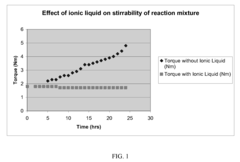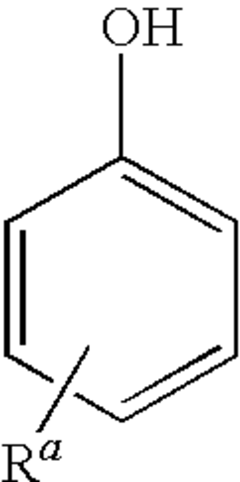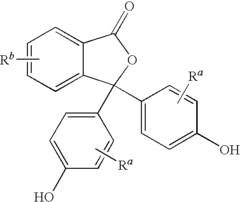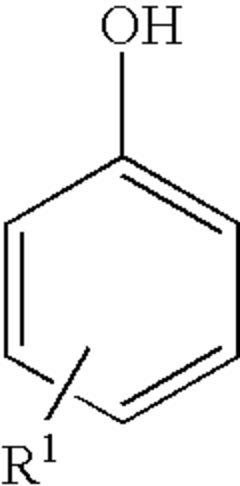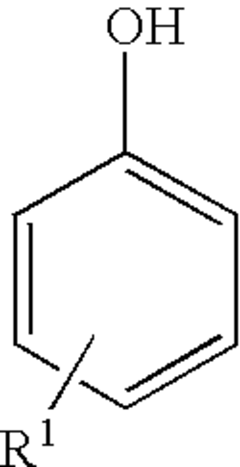Application of Phenolphthalein in Advanced Energetic Compounds
JUL 24, 20259 MIN READ
Generate Your Research Report Instantly with AI Agent
Patsnap Eureka helps you evaluate technical feasibility & market potential.
Phenolphthalein in Energetics: Background and Objectives
Phenolphthalein, a compound traditionally known for its use as a pH indicator, has recently emerged as a subject of interest in the field of advanced energetic materials. This unexpected application represents a significant shift in the compound's utility, bridging the gap between analytical chemistry and high-energy materials science.
The journey of phenolphthalein in energetics began with the recognition of its unique molecular structure. Its large, conjugated system and the presence of multiple functional groups make it an intriguing candidate for energy storage and release mechanisms. Researchers have been exploring ways to harness these structural features to develop novel energetic compounds with enhanced performance characteristics.
The primary objective of investigating phenolphthalein in energetics is to create more efficient and controllable high-energy materials. Traditional energetic compounds often face challenges related to stability, sensitivity, and energy density. By incorporating phenolphthalein into energetic formulations, scientists aim to address these issues and potentially unlock new capabilities in the field.
One of the key areas of focus is the development of insensitive munitions. These are explosives and propellants designed to withstand accidental detonation, thereby improving safety in storage and transport. The unique properties of phenolphthalein-based energetic compounds show promise in enhancing the stability of such materials without compromising their performance.
Another significant objective is to increase the energy density of explosive and propellant formulations. The complex structure of phenolphthalein offers potential pathways for storing more energy per unit mass or volume compared to conventional energetic materials. This could lead to more powerful explosives or more efficient rocket propellants, with applications ranging from mining to space exploration.
The exploration of phenolphthalein in energetics also aligns with the broader trend of seeking environmentally friendly alternatives in high-energy materials. As a relatively benign organic compound, phenolphthalein-based energetics could potentially offer reduced environmental impact compared to some traditional formulations that rely on heavy metals or other toxic components.
As research in this field progresses, scientists are also investigating the fundamental mechanisms by which phenolphthalein-based compounds store and release energy. Understanding these processes at the molecular level is crucial for optimizing performance and developing predictive models for new energetic materials.
The integration of phenolphthalein into energetic compounds represents a convergence of multiple scientific disciplines, including organic chemistry, materials science, and chemical engineering. This interdisciplinary approach is expected to drive innovation and potentially lead to breakthroughs in the design of next-generation energetic materials.
The journey of phenolphthalein in energetics began with the recognition of its unique molecular structure. Its large, conjugated system and the presence of multiple functional groups make it an intriguing candidate for energy storage and release mechanisms. Researchers have been exploring ways to harness these structural features to develop novel energetic compounds with enhanced performance characteristics.
The primary objective of investigating phenolphthalein in energetics is to create more efficient and controllable high-energy materials. Traditional energetic compounds often face challenges related to stability, sensitivity, and energy density. By incorporating phenolphthalein into energetic formulations, scientists aim to address these issues and potentially unlock new capabilities in the field.
One of the key areas of focus is the development of insensitive munitions. These are explosives and propellants designed to withstand accidental detonation, thereby improving safety in storage and transport. The unique properties of phenolphthalein-based energetic compounds show promise in enhancing the stability of such materials without compromising their performance.
Another significant objective is to increase the energy density of explosive and propellant formulations. The complex structure of phenolphthalein offers potential pathways for storing more energy per unit mass or volume compared to conventional energetic materials. This could lead to more powerful explosives or more efficient rocket propellants, with applications ranging from mining to space exploration.
The exploration of phenolphthalein in energetics also aligns with the broader trend of seeking environmentally friendly alternatives in high-energy materials. As a relatively benign organic compound, phenolphthalein-based energetics could potentially offer reduced environmental impact compared to some traditional formulations that rely on heavy metals or other toxic components.
As research in this field progresses, scientists are also investigating the fundamental mechanisms by which phenolphthalein-based compounds store and release energy. Understanding these processes at the molecular level is crucial for optimizing performance and developing predictive models for new energetic materials.
The integration of phenolphthalein into energetic compounds represents a convergence of multiple scientific disciplines, including organic chemistry, materials science, and chemical engineering. This interdisciplinary approach is expected to drive innovation and potentially lead to breakthroughs in the design of next-generation energetic materials.
Market Analysis for Advanced Energetic Compounds
The market for advanced energetic compounds has been experiencing significant growth in recent years, driven by increasing demand from various sectors including defense, aerospace, mining, and construction. The global market for these compounds is projected to reach substantial value in the coming years, with a compound annual growth rate outpacing many other chemical sectors.
In the defense sector, there is a growing need for more powerful and efficient explosives and propellants. This demand is fueled by the ongoing modernization of military equipment and the development of precision-guided munitions. The aerospace industry also contributes significantly to market growth, with the expansion of space exploration programs and satellite launches requiring advanced propellants.
The mining and construction industries are increasingly adopting advanced energetic compounds for controlled demolition and excavation purposes. These sectors value the precision and efficiency offered by newer formulations, which allow for more targeted and environmentally friendly operations.
Phenolphthalein, traditionally known for its use as a pH indicator, is emerging as a potential component in advanced energetic compounds. Its unique chemical properties make it an interesting candidate for incorporation into new formulations. The market potential for phenolphthalein-based energetic compounds is still in its early stages but shows promise for niche applications.
One of the key drivers for the adoption of phenolphthalein in energetic compounds is the push for more environmentally friendly and safer alternatives to traditional explosives. As regulations become stricter regarding the environmental impact of energetic materials, compounds that offer reduced toxicity and improved biodegradability are gaining attention.
The market for phenolphthalein-based energetic compounds is likely to see initial growth in research and development sectors, with potential applications in specialized military and industrial uses. However, widespread commercial adoption will depend on further research into its performance characteristics and cost-effectiveness compared to existing solutions.
Geographically, North America and Europe are expected to lead in the development and adoption of advanced energetic compounds, including those incorporating phenolphthalein. This is due to their strong defense and aerospace industries, as well as stringent environmental regulations driving innovation in this field. Asia-Pacific is anticipated to be a rapidly growing market, particularly with increasing defense spending in countries like China and India.
In the defense sector, there is a growing need for more powerful and efficient explosives and propellants. This demand is fueled by the ongoing modernization of military equipment and the development of precision-guided munitions. The aerospace industry also contributes significantly to market growth, with the expansion of space exploration programs and satellite launches requiring advanced propellants.
The mining and construction industries are increasingly adopting advanced energetic compounds for controlled demolition and excavation purposes. These sectors value the precision and efficiency offered by newer formulations, which allow for more targeted and environmentally friendly operations.
Phenolphthalein, traditionally known for its use as a pH indicator, is emerging as a potential component in advanced energetic compounds. Its unique chemical properties make it an interesting candidate for incorporation into new formulations. The market potential for phenolphthalein-based energetic compounds is still in its early stages but shows promise for niche applications.
One of the key drivers for the adoption of phenolphthalein in energetic compounds is the push for more environmentally friendly and safer alternatives to traditional explosives. As regulations become stricter regarding the environmental impact of energetic materials, compounds that offer reduced toxicity and improved biodegradability are gaining attention.
The market for phenolphthalein-based energetic compounds is likely to see initial growth in research and development sectors, with potential applications in specialized military and industrial uses. However, widespread commercial adoption will depend on further research into its performance characteristics and cost-effectiveness compared to existing solutions.
Geographically, North America and Europe are expected to lead in the development and adoption of advanced energetic compounds, including those incorporating phenolphthalein. This is due to their strong defense and aerospace industries, as well as stringent environmental regulations driving innovation in this field. Asia-Pacific is anticipated to be a rapidly growing market, particularly with increasing defense spending in countries like China and India.
Current Challenges in Phenolphthalein-based Energetics
The application of phenolphthalein in advanced energetic compounds faces several significant challenges that hinder its widespread adoption and optimal performance. One of the primary obstacles is the stability of phenolphthalein-based energetic materials under various environmental conditions. These compounds often exhibit sensitivity to temperature fluctuations, humidity, and mechanical stress, which can lead to premature degradation or unintended detonation.
Another critical challenge lies in the energy density of phenolphthalein-based energetics. While phenolphthalein offers unique properties, its energy content is generally lower compared to traditional high-energy materials. This limitation necessitates the development of novel molecular designs and formulations to enhance the overall energetic performance without compromising safety or stability.
The synthesis and scale-up of phenolphthalein-derived energetic compounds present additional hurdles. Current production methods often involve complex, multi-step processes with low yields, making large-scale manufacturing economically challenging. Moreover, the purification of these compounds to meet the stringent requirements for energetic applications can be difficult and resource-intensive.
Compatibility issues with other components in energetic systems also pose significant challenges. Phenolphthalein-based materials may interact unfavorably with binders, plasticizers, or other additives commonly used in energetic formulations, potentially compromising the overall performance or shelf life of the final product.
The environmental impact of phenolphthalein-based energetics is another area of concern. As regulations become increasingly stringent, there is a growing need to develop more eco-friendly alternatives that minimize harmful byproducts and reduce the environmental footprint of energetic materials throughout their lifecycle.
Lastly, the characterization and testing of phenolphthalein-based energetic compounds present unique challenges. Standard testing protocols may not adequately capture the specific properties and behaviors of these materials, necessitating the development of new analytical methods and safety protocols tailored to their unique characteristics.
Addressing these challenges requires a multidisciplinary approach, combining expertise in organic synthesis, materials science, chemical engineering, and safety engineering. Overcoming these obstacles will be crucial for realizing the full potential of phenolphthalein in advanced energetic applications and paving the way for next-generation high-performance materials.
Another critical challenge lies in the energy density of phenolphthalein-based energetics. While phenolphthalein offers unique properties, its energy content is generally lower compared to traditional high-energy materials. This limitation necessitates the development of novel molecular designs and formulations to enhance the overall energetic performance without compromising safety or stability.
The synthesis and scale-up of phenolphthalein-derived energetic compounds present additional hurdles. Current production methods often involve complex, multi-step processes with low yields, making large-scale manufacturing economically challenging. Moreover, the purification of these compounds to meet the stringent requirements for energetic applications can be difficult and resource-intensive.
Compatibility issues with other components in energetic systems also pose significant challenges. Phenolphthalein-based materials may interact unfavorably with binders, plasticizers, or other additives commonly used in energetic formulations, potentially compromising the overall performance or shelf life of the final product.
The environmental impact of phenolphthalein-based energetics is another area of concern. As regulations become increasingly stringent, there is a growing need to develop more eco-friendly alternatives that minimize harmful byproducts and reduce the environmental footprint of energetic materials throughout their lifecycle.
Lastly, the characterization and testing of phenolphthalein-based energetic compounds present unique challenges. Standard testing protocols may not adequately capture the specific properties and behaviors of these materials, necessitating the development of new analytical methods and safety protocols tailored to their unique characteristics.
Addressing these challenges requires a multidisciplinary approach, combining expertise in organic synthesis, materials science, chemical engineering, and safety engineering. Overcoming these obstacles will be crucial for realizing the full potential of phenolphthalein in advanced energetic applications and paving the way for next-generation high-performance materials.
Existing Phenolphthalein Applications in Energetics
01 Synthesis and production of phenolphthalein
Various methods and processes for synthesizing and producing phenolphthalein are described. These include different reaction conditions, catalysts, and starting materials to optimize yield and purity of the final product.- Synthesis and preparation of phenolphthalein: Various methods and processes for synthesizing and preparing phenolphthalein are described. These include different reaction conditions, catalysts, and starting materials to produce phenolphthalein efficiently and with high purity.
- Phenolphthalein derivatives and modifications: Research on developing new phenolphthalein derivatives and modifications to enhance its properties or create new applications. This includes structural modifications, functional group additions, and the creation of novel compounds based on the phenolphthalein core.
- Analytical and detection applications: Use of phenolphthalein in various analytical and detection methods, including its role as an indicator in titrations, pH measurements, and colorimetric assays. Development of new analytical techniques incorporating phenolphthalein for diverse applications in chemistry and biochemistry.
- Pharmaceutical and medical uses: Exploration of phenolphthalein's potential in pharmaceutical and medical applications. This includes its use in drug formulations, medical diagnostics, and therapeutic applications, as well as research into its physiological effects and safety considerations.
- Industrial and consumer product applications: Integration of phenolphthalein into various industrial processes and consumer products. This encompasses its use in cleaning agents, dyes, inks, and other commercial applications, as well as research into improving its stability and performance in different product formulations.
02 Phenolphthalein as an indicator
Phenolphthalein is widely used as a pH indicator in various applications. Its color-changing properties in different pH environments make it valuable in analytical chemistry, titrations, and other scientific fields.Expand Specific Solutions03 Phenolphthalein derivatives and modifications
Research on developing new derivatives and modifications of phenolphthalein to enhance its properties or create new functionalities. This includes structural modifications, substitutions, and the creation of novel compounds based on the phenolphthalein core.Expand Specific Solutions04 Applications in polymer and material science
Phenolphthalein and its derivatives are used in various polymer and material science applications. This includes their incorporation into resins, plastics, and other materials to impart specific properties or functionalities.Expand Specific Solutions05 Analytical methods and detection techniques
Development of analytical methods and detection techniques involving phenolphthalein. This includes its use in colorimetric assays, spectrophotometric methods, and other analytical procedures for detecting various substances or monitoring chemical reactions.Expand Specific Solutions
Key Industry Players and Competitors
The application of phenolphthalein in advanced energetic compounds represents an emerging field at the intersection of chemistry and materials science. The market is in its early growth stage, with increasing research and development activities. While the exact market size is not well-defined, it is expected to expand as new applications are discovered. Technologically, the field is still evolving, with companies like CSPC Pharmaceutical Group, Sichuan University, and Dalian University of Technology leading research efforts. Major chemical companies such as DuPont and BASF are also likely to play significant roles as the technology matures. Collaboration between academic institutions and industry players is driving innovation in this specialized area.
Dalian University of Technology
Technical Solution: Dalian University of Technology has made significant contributions to the field of phenolphthalein-based advanced energetic compounds. Their research focuses on the development of multi-functional energetic materials that incorporate phenolphthalein's unique properties. The university has pioneered the synthesis of phenolphthalein-based energetic salts, which exhibit both high energy density and low sensitivity to external stimuli[10]. These materials show promise for use in insensitive munitions and safe-to-handle explosives. Additionally, Dalian University of Technology has explored the use of phenolphthalein derivatives in energetic co-crystals, creating materials with tunable detonation properties and improved thermal stability[11]. Their work also extends to the development of phenolphthalein-containing energetic polymers with self-healing capabilities, addressing the issue of micro-crack formation in energetic materials during storage and use[12].
Strengths: Focus on multi-functional energetic materials; advancements in safety and stability; innovative approaches to material design. Weaknesses: Some technologies may require further development for practical applications; potential regulatory challenges for novel energetic compounds.
Beijing University of Chemical Technology
Technical Solution: Beijing University of Chemical Technology has conducted extensive research on the application of phenolphthalein in advanced energetic compounds. Their approach focuses on the molecular design of phenolphthalein-based energetic materials with enhanced performance and reduced environmental impact. The university's research team has developed novel synthesis methods for creating phenolphthalein derivatives with increased nitrogen content, resulting in higher energy density and improved oxygen balance[7]. They have also explored the use of phenolphthalein as a building block for energetic polymers, which offer improved mechanical properties and processability compared to traditional energetic materials[8]. Additionally, the university has investigated the potential of phenolphthalein-based compounds in thermally stable energetic materials, demonstrating significant improvements in decomposition temperature and long-term storage stability[9].
Strengths: Innovative molecular design approaches; focus on environmentally friendly energetic materials; potential for improved material properties. Weaknesses: Some compounds may be in early research stages; scalability of synthesis methods may be challenging.
Innovative Phenolphthalein-based Energetic Compounds
Method for producing phenolphthalein compound using ionic liquid catalyst composition
PatentInactiveUS7838689B2
Innovation
- The use of an ionic liquid catalyst composition, comprising a combination of an ionic liquid and a metal halide, facilitates the separation and potential reuse of the catalyst, reducing waste and improving the efficiency of the phenolphthalein production process.
Catalytic method for producing phenolphthalein compounds
PatentInactiveUS7915430B2
Innovation
- A method using a heterogeneous catalyst comprising metal oxides such as molybdenum or tungsten in combination with porous supports like zirconium oxide, allowing for easy separation and regeneration of the catalyst, reducing waste, and achieving high purity phenolphthalein production.
Safety and Handling Protocols for Phenolphthalein Energetics
The safe handling and storage of phenolphthalein-based energetic compounds require stringent protocols due to their potentially hazardous nature. Personnel working with these materials must undergo comprehensive safety training, focusing on proper handling techniques, personal protective equipment (PPE) usage, and emergency response procedures. Mandatory PPE includes chemical-resistant gloves, safety goggles, and flame-resistant lab coats.
Storage facilities for phenolphthalein energetics should be equipped with temperature and humidity control systems to maintain optimal conditions and prevent degradation or accidental detonation. These compounds must be stored in sealed, anti-static containers within explosion-proof cabinets or bunkers, away from sources of heat, sparks, or open flames. Regular inspections of storage areas are essential to ensure compliance with safety standards and detect any signs of material degradation.
Transportation of phenolphthalein-based energetic compounds necessitates specialized packaging and labeling in accordance with international regulations for hazardous materials. Vehicles used for transport should be equipped with fire suppression systems and anti-static measures. Route planning must consider potential risks and avoid densely populated areas when possible.
Laboratory protocols for handling phenolphthalein energetics include the use of blast shields, remote manipulation tools, and designated work areas with restricted access. All experiments involving these compounds should be conducted in fume hoods or glove boxes to minimize exposure risks. Strict inventory control measures must be implemented to track the quantity and location of all materials at all times.
Waste disposal of phenolphthalein energetics requires specialized procedures to neutralize their energetic properties before disposal. This may involve chemical treatment or controlled incineration at approved facilities. Contaminated equipment and PPE must be decontaminated or disposed of as hazardous waste according to local regulations.
Emergency response plans specific to phenolphthalein energetics incidents should be developed and regularly practiced. These plans should address scenarios such as fires, spills, and accidental detonations. On-site emergency equipment, including appropriate fire extinguishers, spill kits, and first aid supplies, must be readily accessible and maintained in good condition.
Regular safety audits and risk assessments are crucial to identify potential hazards and improve safety protocols continuously. This includes reviewing incident reports, near-misses, and industry best practices to update handling procedures and safety measures as needed. Collaboration with local emergency services and regulatory agencies is essential to ensure comprehensive preparedness for potential incidents involving phenolphthalein-based energetic compounds.
Storage facilities for phenolphthalein energetics should be equipped with temperature and humidity control systems to maintain optimal conditions and prevent degradation or accidental detonation. These compounds must be stored in sealed, anti-static containers within explosion-proof cabinets or bunkers, away from sources of heat, sparks, or open flames. Regular inspections of storage areas are essential to ensure compliance with safety standards and detect any signs of material degradation.
Transportation of phenolphthalein-based energetic compounds necessitates specialized packaging and labeling in accordance with international regulations for hazardous materials. Vehicles used for transport should be equipped with fire suppression systems and anti-static measures. Route planning must consider potential risks and avoid densely populated areas when possible.
Laboratory protocols for handling phenolphthalein energetics include the use of blast shields, remote manipulation tools, and designated work areas with restricted access. All experiments involving these compounds should be conducted in fume hoods or glove boxes to minimize exposure risks. Strict inventory control measures must be implemented to track the quantity and location of all materials at all times.
Waste disposal of phenolphthalein energetics requires specialized procedures to neutralize their energetic properties before disposal. This may involve chemical treatment or controlled incineration at approved facilities. Contaminated equipment and PPE must be decontaminated or disposed of as hazardous waste according to local regulations.
Emergency response plans specific to phenolphthalein energetics incidents should be developed and regularly practiced. These plans should address scenarios such as fires, spills, and accidental detonations. On-site emergency equipment, including appropriate fire extinguishers, spill kits, and first aid supplies, must be readily accessible and maintained in good condition.
Regular safety audits and risk assessments are crucial to identify potential hazards and improve safety protocols continuously. This includes reviewing incident reports, near-misses, and industry best practices to update handling procedures and safety measures as needed. Collaboration with local emergency services and regulatory agencies is essential to ensure comprehensive preparedness for potential incidents involving phenolphthalein-based energetic compounds.
Environmental Impact Assessment
The application of phenolphthalein in advanced energetic compounds raises significant environmental concerns that require thorough assessment. The primary environmental impact stems from the potential release of these compounds during manufacturing, storage, transportation, and use. When exposed to the environment, phenolphthalein-based energetic materials can decompose, releasing toxic byproducts that may contaminate soil and water resources.
One of the main environmental risks associated with these compounds is their persistence in ecosystems. Unlike some conventional energetic materials, phenolphthalein-based compounds may have longer environmental half-lives, leading to prolonged exposure and potential bioaccumulation in various organisms. This persistence can disrupt local ecosystems and food chains, potentially causing long-term ecological damage.
Water contamination is a particular concern, as phenolphthalein and its derivatives are known to be soluble in aqueous environments. Runoff from manufacturing sites or improper disposal can lead to the contamination of groundwater and surface water bodies. This not only affects aquatic ecosystems but also poses risks to human health if the contaminated water enters drinking water supplies.
Air quality may also be impacted, particularly in areas surrounding production facilities. The manufacturing process of these advanced energetic compounds can release volatile organic compounds (VOCs) and particulate matter, contributing to local air pollution. Proper filtration and emission control systems are crucial to mitigate these effects.
The potential for accidental detonation or combustion of these energetic compounds presents another environmental hazard. Such incidents could result in the sudden release of large quantities of toxic substances, causing immediate and severe damage to surrounding ecosystems. The aftermath of such events may require extensive and costly environmental remediation efforts.
Biodegradation of phenolphthalein-based energetic compounds in the environment is an area that requires further study. The rate and byproducts of degradation can vary depending on environmental conditions, potentially leading to the formation of secondary pollutants with unknown ecological impacts.
To address these environmental concerns, comprehensive life cycle assessments of phenolphthalein-based energetic compounds are necessary. These assessments should consider all stages from raw material extraction to final disposal or decommissioning. Implementing green chemistry principles in the design and production of these compounds could help minimize their environmental footprint.
Regulatory frameworks and industry standards must be developed or adapted to specifically address the unique environmental challenges posed by these advanced energetic materials. This includes establishing guidelines for safe handling, storage, and disposal, as well as setting limits on environmental releases and mandating regular monitoring of potentially affected ecosystems.
One of the main environmental risks associated with these compounds is their persistence in ecosystems. Unlike some conventional energetic materials, phenolphthalein-based compounds may have longer environmental half-lives, leading to prolonged exposure and potential bioaccumulation in various organisms. This persistence can disrupt local ecosystems and food chains, potentially causing long-term ecological damage.
Water contamination is a particular concern, as phenolphthalein and its derivatives are known to be soluble in aqueous environments. Runoff from manufacturing sites or improper disposal can lead to the contamination of groundwater and surface water bodies. This not only affects aquatic ecosystems but also poses risks to human health if the contaminated water enters drinking water supplies.
Air quality may also be impacted, particularly in areas surrounding production facilities. The manufacturing process of these advanced energetic compounds can release volatile organic compounds (VOCs) and particulate matter, contributing to local air pollution. Proper filtration and emission control systems are crucial to mitigate these effects.
The potential for accidental detonation or combustion of these energetic compounds presents another environmental hazard. Such incidents could result in the sudden release of large quantities of toxic substances, causing immediate and severe damage to surrounding ecosystems. The aftermath of such events may require extensive and costly environmental remediation efforts.
Biodegradation of phenolphthalein-based energetic compounds in the environment is an area that requires further study. The rate and byproducts of degradation can vary depending on environmental conditions, potentially leading to the formation of secondary pollutants with unknown ecological impacts.
To address these environmental concerns, comprehensive life cycle assessments of phenolphthalein-based energetic compounds are necessary. These assessments should consider all stages from raw material extraction to final disposal or decommissioning. Implementing green chemistry principles in the design and production of these compounds could help minimize their environmental footprint.
Regulatory frameworks and industry standards must be developed or adapted to specifically address the unique environmental challenges posed by these advanced energetic materials. This includes establishing guidelines for safe handling, storage, and disposal, as well as setting limits on environmental releases and mandating regular monitoring of potentially affected ecosystems.
Unlock deeper insights with Patsnap Eureka Quick Research — get a full tech report to explore trends and direct your research. Try now!
Generate Your Research Report Instantly with AI Agent
Supercharge your innovation with Patsnap Eureka AI Agent Platform!
